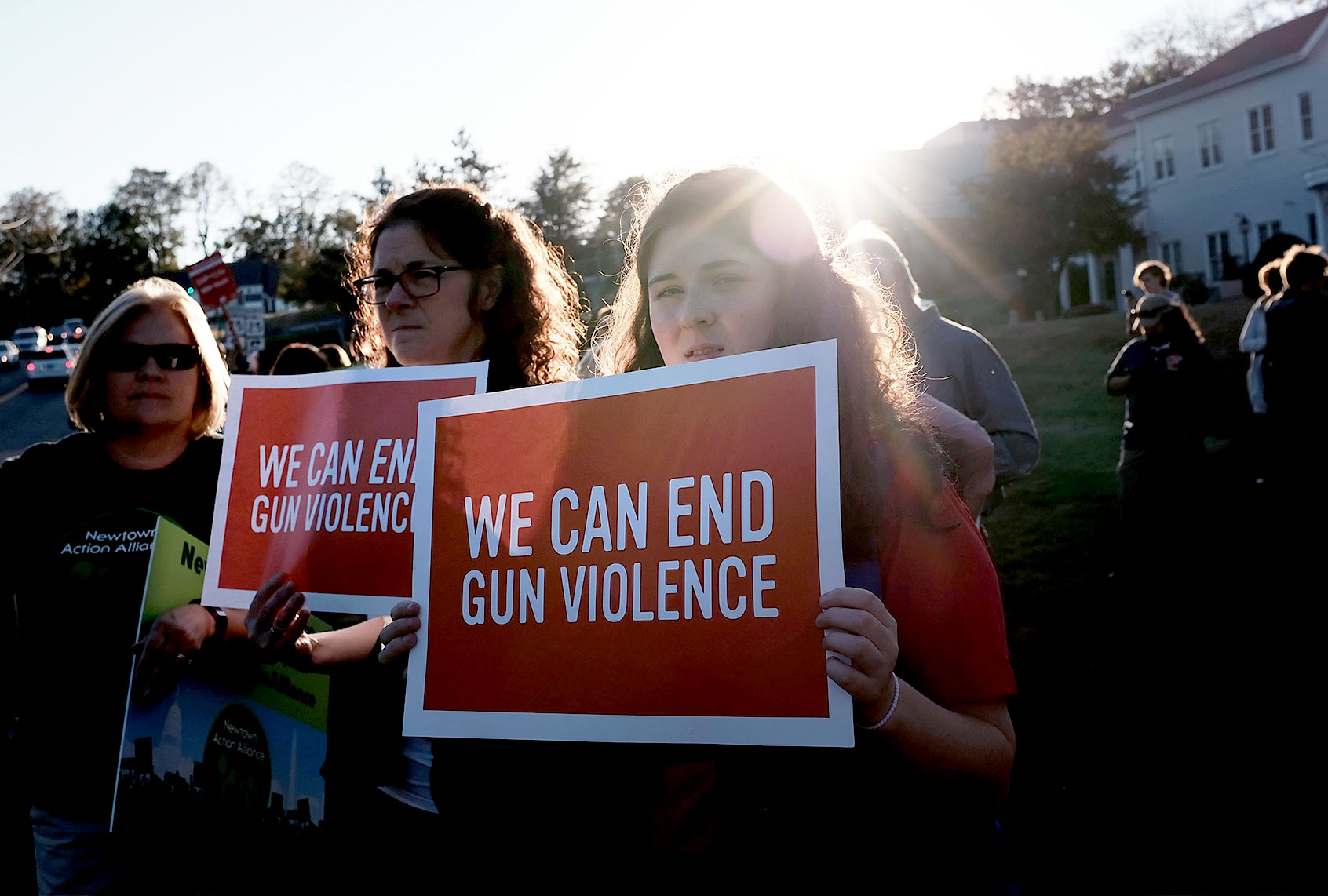After 20 children and six adults were brutally murdered during the Sandy Hook school shooting in 2012, political leaders from President Barack Obama to ordinary Democrats pushed for gun control. Despite overwhelming public support for at least modest gun control measures, the efforts to implement federal reform were for nought, thanks in large part to the massive political clout wielded by pro-gun lobbying groups like the National Rifle Association (NRA).
Lost in all the controversy, though, was the simple question of whether the types of gun control policies considered by Obama could have saved lives. A study published earlier this year offers strong evidence that this is at least partially the case: As implemented after the Sandy Hook shooting, at least one kind of handgun restriction actually worked to reduce violence in the states that enacted it.
The researchers studied a specific set of policies — namely, those which impose a delay into a potential firearm owner’s efforts to purchase a handgun. The two categories of measures which achieve this are mandatory waiting periods and forcing buyers to obtain a purchasing permit.
After deciding to lump both sets of policies together because of their shared consequence (delaying handgun purchases), co-authors Christoph Koenig of the University of Bristol and David Schindler of Tilburg University led an analysis of data from 15 states which already had handgun purchase delay laws in place during the months after the Sandy Hook shooting (in late 2012 and early 2013). Their findings, which were published in the journal The Review of Economics and Statistics, are clear.
“We show that these measures causally prevented excessive gun sales after the shooting at Sandy Hook, and that this causes additional homicides, particularly among women in a domestic context,” Schindler told Salon by email. “To summarize your question: Laws that delay gun purchases cause lower gun sales after shocks like the Sandy Hook shooting and thus are able to prevent homicides, many of which are domestic.”
There was a surge in gun sales in the months immediately after Sandy Hook, as right-wing media outlets falsely told their audience that they were at risk of losing their Second Amendment rights. Yet during that period, Schindler and Koenig found that the 15 states with purchase delays experienced 2% lower homicide rates than those without those restrictions, which was linked to a 7% to 8% decrease in total handgun sales in those areas. This drop was driven entirely by handgun-related homicides. Soberly, the scholars also noted that according to their baseline estimate, roughly 200 lives could have been saved just in the six-month period after Sandy Hook if handgun purchase delays existed throughout the nation.
Want more health and science stories in your inbox? Subscribe to Salon’s weekly newsletter The Vulgar Scientist.
Although national gun control efforts have seen little success in the nine years since Sandy Hook, the epidemic of gun violence continues to plague America. Another paper published earlier this year — this time in the journal Scientific Reports and by researchers at Penn State University — found that gun violence in the United States increased by more than 30% during the COVID-19 pandemic. This was largely fueled by massive jumps in gun violence, including a surge of more than 100 percent over the previous year in Michigan, Minnesota and New York. Although the authors did not set out to ascertain the causes of the gun violence increase, study co-author Dr. Paddy Ssentongo wrote to Salon that “the COVID-19 pandemic has been associated with psychological distress caused by the shelter-in-place orders, increased rates of domestic violence, disruption of social networks, unemployment, and record increases in gun sales and access to guns during the pandemic.” It was not unreasonable, Ssentongo pointed out, to assume these factors at least played an important role.
Schindler had a similar observation about how stressful social conditions motivate gun purchases.
“From our understanding, there are two main types of motives that drive people to buy guns,” Schindler explained. “The first is an increased perceived need for self-defense. Events like school shootings or a pandemic may induce some people to think that the government may no longer be in a position to keep them safe (fearing a collapse of government or public order), which in turn increases the desire to be able to defend oneself. The second is a fear (e.g., in the case of elections) that gun laws will change and gun purchases be no longer legal. Given the most recent SCOTUS interpretation of [the Second Amendment], these fears are largely unrealistic, of course, but if there are enough people having such an unrealistic fear, it will show up in aggregate numbers.”
There is a long and contentious political history to gun control laws in the United States, and the political boundaries regarding support or opposition have shifted over the years. Jurists grappled for more than a century over the extent to which the Second Amendment protected individual firearm rights, but no mainstream legal opinions at that time held that an ordinary citizen should be completely unfettered when trying to acquire weapons. Conservatives even threw their weight behind gun control measures like the National Firearms Act of 1934 (meant to fight organized crime and endorsed by the NRA) or the Mulford Act of 1967 (a California gun control law backed by future president Ronald Reagan, then governor, to stop armed Black Panthers from intimidating police officers). The prevalent militantly pro-gun philosophy can be traced back to a 1977 internal coup at the NRA, which transformed the organization from being more of a sportsmen’s club into the right-wing activist group it is known as today.

